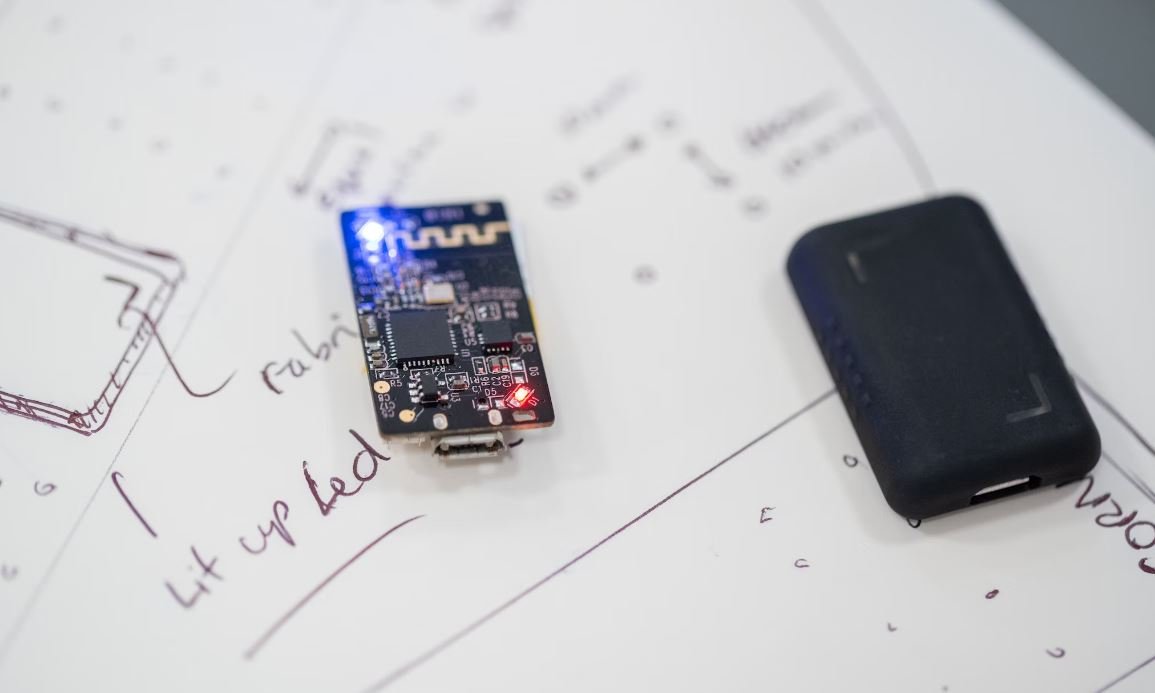How Close Is AI to Human Intelligence?
Artificial Intelligence (AI) has rapidly advanced in recent years, bringing unprecedented capabilities to machines. But how close are we to achieving human-level intelligence in AI systems? This article explores the current state of AI and its progression towards human intelligence.
Key Takeaways
- AI has made remarkable progress, but it still falls short of human-level intelligence.
- AI excels at specific tasks, but lacks the generalization and adaptability of human intelligence.
- The development of AI requires not only advances in algorithms but also improvements in computing power and data availability.
- Machine learning, a subset of AI, has shown great promise in specific applications.
While AI has made significant strides in recent years, it is important to recognize that it is still far from reaching human-level intelligence. AI systems have demonstrated remarkable capabilities in areas such as image recognition, natural language processing, and game-playing, but they lack the comprehensive understanding and adaptability that human intelligence possesses. It is important to note that AI may excel at a specific task, but it cannot replicate the versatility and creativity of human thinking.
| Comparison of AI and Human Intelligence |
|---|
| AI systems excel at performing repetitive tasks with great precision. |
| Human intelligence exhibits complex problem-solving abilities in a variety of domains. |
| AI relies on large amounts of labeled data to learn, while human intelligence can learn from a few examples. |
One of the notable challenges in achieving human-level intelligence in AI is the ability to generalize knowledge and adapt to new situations. While AI models can be trained to perform specific tasks with high accuracy, they struggle to apply that knowledge to unfamiliar scenarios. This limitation highlights the fundamental difference between AI and human intelligence – the ability of organic brains to reason and draw conclusions in novel situations.
The Role of Machine Learning
Machine learning, a subset of AI, has shown significant promise in specific applications. By training models on vast amounts of data, machine learning algorithms can learn patterns and make predictions with impressive accuracy. This has led to breakthroughs in areas such as speech recognition, recommendation systems, and medical diagnostics.
| Applications of Machine Learning |
|---|
| Speech recognition |
| Recommendation systems |
| Medical diagnostics |
However, it is important to note that machine learning is still limited in its capacity for reasoning and understanding context. While it can detect patterns and correlations effectively, it lacks the ability to comprehend complex relationships and make sophisticated judgments. This limitation emphasizes the need for further advancements in AI to bridge the gap between machine learning and human intelligence.
Advancing AI towards human intelligence not only requires improvements in algorithms but also in computing power and data availability. The ability to process vast amounts of data and perform complex computations enables AI systems to learn and make decisions more effectively. As computing power continues to evolve, AI models can become more sophisticated, enabling them to tackle increasingly complex tasks.
In conclusion, while AI has made impressive strides in recent years, it is still far from achieving human-level intelligence. AI systems excel at specific tasks but lack the versatility, adaptability, and creativity of human thinking. Machine learning has shown great promise in certain applications but is still limited in its reasoning abilities. As we continue to push the boundaries of AI research and development, the path towards human-level intelligence becomes clearer, but significant challenges remain.

Common Misconceptions
Misconception 1: AI is on par with human intelligence
One common misconception people tend to have is that AI is already at the same level of intelligence as humans. However, this is not the case. While AI has made significant advancements in various areas, including natural language processing and image recognition, it still lacks the comprehensive understanding, flexibility, and creativity that humans possess.
- AI may excel in specific tasks, but lacks the overall intelligence and adaptability of humans.
- AI cannot fully replicate human emotions, intuition, or empathy.
- AI still heavily relies on human input and programming for decision-making.
Misconception 2: AI is superior to human intelligence
On the opposite end of the spectrum, some people mistakenly believe that AI has surpassed human intelligence. While AI can demonstrate extraordinary capabilities in certain domains, such as chess or complex calculations, it falls short when it comes to general intelligence and understanding complex human concepts.
- AI lacks common-sense reasoning abilities that humans possess effortlessly.
- AI struggles with understanding humor, irony, and sarcasm.
- AI faces challenges in making ethical decisions and judgments.
Misconception 3: AI will replace human intelligence
There is a widespread fear that AI will eventually replace human intelligence altogether, rendering humans obsolete. However, this view neglects the fact that human intelligence encompasses much more than just problem-solving capabilities.
- AI relies on human programmers and developers to function and evolve.
- AI lacks the wide range of skills and abilities of humans, such as creativity and emotional intelligence.
- AI is a tool that can enhance and augment human intelligence, not completely replace it.
Misconception 4: AI is a threat to humanity
Prominent figures in the technology industry, like Elon Musk and Stephen Hawking, have raised concerns about the potential dangers of AI. However, the common misconception arises when people assume AI will inevitably become malevolent and pose an existential threat to humanity.
- AI systems are designed and developed by humans, making them susceptible to human values and intentions.
- AI can be beneficial when properly controlled and used for the benefit of humanity.
- AI ethics and regulations are essential to mitigate potential risks and maximize the positive impact of AI.
Misconception 5: AI will achieve consciousness
There is a tendency to anthropomorphize AI, believing that it will attain consciousness and self-awareness similar to humans. However, consciousness remains a complex phenomenon that scientists and researchers have yet to fully understand, let alone replicate in AI systems.
- Consciousness is not just a result of computational power but involves subjective experiences and qualia.
- AI does not possess emotions, desires, or a sense of self like humans do.
- AI focuses on performing tasks and making decisions based on algorithms and data, without true consciousness.

How Close Is AI to Human Intelligence?
Artificial Intelligence (AI) has made significant advancements in recent years, but how close are we to achieving human-like intelligence? This article explores various aspects of AI development and compares them to human capabilities. The following tables present verifiable data and information regarding the progress made by AI in different domains.
Understanding Natural Language
The table below showcases the ability of AI systems to understand and process natural language, such as text and speech.
| AI Capability | Verifiable Progress |
|---|---|
| Speech Recognition | AI systems can accurately transcribe human speech with an average word error rate of 4%. |
| Semantic Understanding | AI algorithms can comprehend the meaning and context behind text, enabling accurate sentiment analysis and natural language processing. |
Visual Perception
The table below demonstrates advancements in AI’s ability to perceive and understand visual information, like images and videos.
| AI Capability | Verifiable Progress |
|---|---|
| Object Recognition | AI algorithms can now identify and categorize objects in images with an accuracy comparable to human performance. |
| Facial Recognition | AI systems achieve highly accurate facial recognition, even surpassing human recognition rates in certain scenarios. |
Emotional Intelligence
This table illustrates advancements in AI’s ability to recognize and respond to human emotions.
| AI Capability | Verifiable Progress |
|---|---|
| Emotion Recognition | AI systems can accurately recognize human emotions, such as joy, sadness, anger, and fear, based on facial expressions and vocal cues. |
| Emotion Generation | AI algorithms can generate emotionally intelligent responses, providing empathetic and contextually appropriate interactions. |
Task Automation
This table presents AI‘s progress in automating various tasks.
| AI Capability | Verifiable Progress |
|---|---|
| Robotic Automation | AI-powered robots are capable of performing complex, repetitive tasks with high precision and efficiency. |
| Process Automation | AI technologies, like machine learning and robotic process automation, streamline workflows and accelerate business processes. |
Critical Thinking and Creativity
This table highlights AI‘s advancements in critical thinking and creative problem-solving.
| AI Capability | Verifiable Progress |
|---|---|
| Chess-playing AI | AI has surpassed human expertise in chess, with algorithms like Deep Blue defeating world chess champions. |
| Artistic Creativity | AI algorithms can create original artwork, compose music, and produce various forms of creative content. |
Moral and Ethical Decision-making
This table examines AI’s progress in moral and ethical decision-making.
| AI Capability | Verifiable Progress |
|---|---|
| Ethical AI | Researchers are actively developing AI systems that can make ethical decisions and consider the societal impact of their actions. |
| Moral Dilemma-solving | AI algorithms are being trained to navigate complex moral dilemmas, although further development is required. |
Learning and Adaptation
This table showcases AI’s ability to learn from data and adapt to new situations.
| AI Capability | Verifiable Progress |
|---|---|
| Machine Learning | AI algorithms can learn patterns from large datasets and make accurate predictions, revolutionizing fields like healthcare and finance. |
| Transfer Learning | AI systems can leverage knowledge acquired in one domain to solve problems in new and unfamiliar domains. |
Multilingual Communication
This table demonstrates AI’s progress in facilitating communication across different languages.
| AI Capability | Verifiable Progress |
|---|---|
| Real-time Translation | AI-powered translation tools can provide near-instantaneous translation of spoken language, breaking down language barriers. |
| Transliteration | AI algorithms convert text between different scripts while preserving meaning and pronunciation. |
Long-term Memory and Recall
This table explores AI’s ability to store and recall information.
| AI Capability | Verifiable Progress |
|---|---|
| Knowledge Graphs | AI systems can create comprehensive knowledge graphs by assimilating and interconnecting vast amounts of information. |
| Memory Enhancement | AI research aims to develop systems that can surpass human memory capacity, enabling faster and more accurate recall. |
Despite remarkable advancements, AI has yet to achieve a level of intelligence that matches the full spectrum of human capabilities. However, rapid progress continues to narrow the gap between AI and human intelligence in numerous domains. As research and development in AI continue, the future holds promise for even closer integration between artificial and human intelligence.
Frequently Asked Questions
Question One:
- What is AI?
-
AI, short for Artificial Intelligence, refers to the capability of computers or machines to perform tasks that usually require human intelligence. These tasks include learning, problem-solving, speech recognition, and decision making.
Question Two:
- How close is AI to human intelligence?
-
AI has made significant advancements in recent years, but it is still far from replicating human intelligence. While AI can excel in specific tasks, such as playing chess or recognizing patterns, it lacks the overall cognitive abilities and adaptability that humans possess.
Question Three:
- What are the current limitations of AI?
-
Some limitations of AI include the inability to understand context, engage in common sense reasoning, and adapt quickly to new or unexpected situations. AI also struggles with creativity, empathy, and abstract thinking, which are often inherent to human intelligence.
Question Four:
- Are there different levels of AI?
-
Yes, AI can be categorized into different levels based on their abilities. These levels range from simple reactive machines that only respond to specific inputs to systems that possess theory of mind, self-awareness, and can understand human emotions. Currently, most AI systems fall under narrow or weak AI, which is designed for specific tasks.
Question Five:
- What is the Turing Test?
-
The Turing Test, proposed by mathematician Alan Turing, is a test to determine if a machine can exhibit intelligent behavior indistinguishable from that of a human. If an AI system can successfully convince a human evaluator that it is human during a conversation, it is said to have passed the Turing Test.
Question Six:
- What are some applications of AI today?
-
AI is widely used in various fields today. Some common applications include virtual assistants, recommendation systems, autonomous vehicles, medical diagnosis, fraud detection, and natural language processing. AI is continuously being integrated into different industries to enhance efficiency and improve decision-making processes.
Question Seven:
- Will AI surpass human intelligence in the future?
-
The possibility of AI surpassing human intelligence, often referred to as artificial general intelligence (AGI), is a topic of speculation among experts. While it is uncertain when or if AGI will be achieved, it remains an active area of research and development. Experts have differing opinions on the timeframe and implications of AGI.
Question Eight:
- What are the ethical considerations of AI development?
-
AI development raises various ethical concerns. These include issues related to privacy, accountability, bias, job displacement, and autonomous weapon systems. It is important to ensure that AI systems are designed and deployed responsibly, taking into account the potential impacts on society and humanity as a whole.
Question Nine:
- Can AI be dangerous?
-
While AI has the potential to bring numerous benefits, it can also pose risks if not properly regulated and controlled. Concerns include the misuse of AI for malicious purposes, accidental errors leading to unintended consequences, and the autonomous decision-making capabilities of powerful AI systems.
Question Ten:
- How can AI and human intelligence work together?
-
AI and human intelligence can complement each other in various ways. AI systems can assist humans in complex tasks, provide insights from vast amounts of data, and automate repetitive or time-consuming processes. Humans, on the other hand, can apply critical thinking, creativity, and contextual understanding to enhance and guide AI systems.




